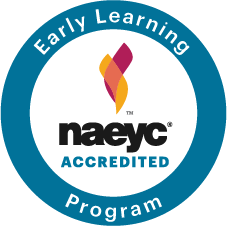
News and Blog
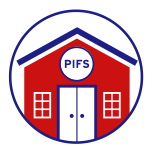
Open House | October 18
August 15, 2018Admission Open House
Thursday, October 18, 2018
5:30–7:00 p.m.
RSVP: 203-661-4629 or pifs101@gmail.com

STEM in the Early Childhood Classroom
January 30, 2018Over the past several years STEM learning (science, technology, engineering, and math) has become a hot topic in education. U.S. citizens enjoy a high standard of living and a strong position in the world due in large part to the contributions of our scientists, engineers and innovators who have helped lead us into this new economy. Now more than ever, we see the importance of STEM learning as a way to prepare our children for the kind of jobs and opportunities that this new economy will continue to bring. Unfortunately, we as a nation have fallen behind other industrialized countries in arming our students with these important STEM skills. We know we need to do better, but at what age is it appropriate to begin?
On January 22, Head of School Mrs. D and Full Day Pre-K teacher Chris Terry hosted an intimate group of parents interested to see and hear how STEM learning looks in the early childhood classroom.
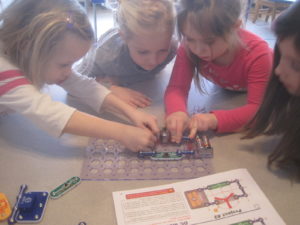
It is not an exaggeration to say that young children are born scientists. They seem to be hardwired from birth to explore their environment, and do so without any prompting from the adults around them. Young children experience their world through their senses, using them to experiment with different materials throughout the classroom. Even very young children can make observations and predictions, carry out simple experiments, evaluate the results and begin to make sense of what they have found. A play-based curriculum provides children with the opportunity to capitalize on their natural curiosity by allowing them to investigate, explore, and question independently.
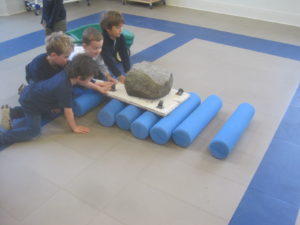
In the past, children were thought of as empty vessels waiting around to be filled with information, facts and figures. However, research reminds us again and again that young children learn best through participation in authentic experiences that allow them to construct their own knowledge. The role of a good STEM classroom is to support children by providing an environment that stimulates them to explore, investigate, observe, create and wonder.
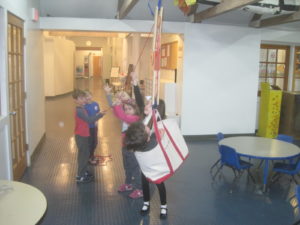
Accordingly, a good STEM teacher is one who resists directly answering children’s questions. Instead, teachers can encourage children by asking purposeful questions and supporting their efforts to learn something or solve a problem for themselves. The idea is to foster the development of the tools necessary for children to be able to learn things on their own.
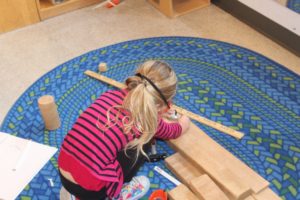
Teachers will often set up “provocations,” which are open-ended opportunities for children to interact with a specially selected set of materials. Children are able to work with the materials independently and experience them at their own pace and developmental level. Left to their own devices, children will inevitably form hypotheses that are tested through informal experiments they conduct on their own. They then revise and retest their hypotheses until a truth is discovered. This demonstrates the natural inclination of children to employ the scientific method in order to solve a problem or overcome an obstacle.
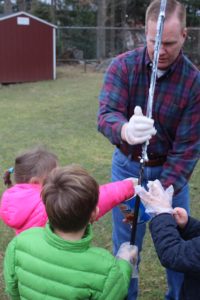
Sometimes provocations are set up to spark an interest in the classroom, while other times they are initiated in support of an interest. Teachers in a STEM classroom keep a sharp eye out for the interests that arise from the children and their play. These interests can lead to a theme of study that may even develop into a long-term project. Teachers seize upon an interest that emerges from the children and try to develop a curriculum around that interest that integrates the different subject matters (science, math, language arts, art, etc.) in a developmentally appropriate manner. We know that young children don’t separate their learning into different content areas; they integrate their learning naturally as they explore topics or themes that appeal to them. Since the lessons and experiences are wrapped around a topic that excites them, children are more likely to reap the benefits that come from integrating different subject matters in this fashion.
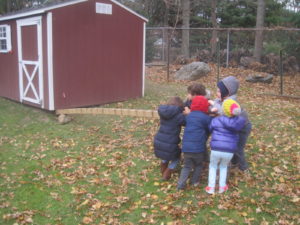
Over the years we have explored all kinds of topics and areas of interest with the children. They are a curious lot and there is no telling what may peak their interest from one day to the next. Ultimately it makes little difference though, since the topic is merely a means to an end. It becomes the vehicle through which we integrate experiences related to art, math, science, language arts, and gross/fine motor skills. It is through these authentic hands-on experiences that children develop the confidence to think creatively, investigate independently and make their own discoveries.

Mini Golf at Greenwich Library | January 26-27
January 16, 2018PIFS is proud to be a sponsor of the Greenwich Library second annual mini golf event taking place January 26-27.
Veronica and Chace are working with students to create our fairy tale-themed hole. Can’t wait to see what our little artists come up with!


Greenwich Treasure – Diane’s Books
June 10, 2017By Karen Hopp, Director of Communications & Development
I always knew Diane’s Books to be a special place and that Greenwich is lucky to have a shop dedicated to nurturing a love of reading – and the imagination and magic that comes with it. (In November, the store will celebrate its 27th anniversary.) But I had not personally met the treasure that is Diane Garrett until recently when we got together to discuss her favorite topic – reading to young children.
I met with Diane to get her summer reading advice and recommendations for her favorite read-aloud early-childhood books to share with the PIFS Family. I intended to do a very straight-forward Q&A and not take up too much of her time. I was surprised to find I could barely keep up with Diane and it was all I could do to simply track her around the shop and jot notes as quickly as possible. I left with anecdotes and lessons to hold onto…
“Reading is caught and not taught.”
Diane doesn’t want parents of young children to get so hung up on reading to teach. It is her experience that we should simply read without agenda as much as possible. That’s not to say she isn’t for discipline in the practice – she encourages reading to be habit, just like brushing our teeth.
Pet peeves
Diane’s pet peeve with parents today is that they come in to the shop and ask their accompanying children if they like particular books – literally asking a child to judge a book by its cover. “The pleasing issue is big,” she said. A parent will come in and tell Diane what types of books the child likes. “I’d rather give some recommendations and have you go home and read them to your child… Snuggle up in bed and read a new book without any requests.” This is, in her opinion, how you get children to try and learn new things without reservations or caveats. “It’s magical,” said Diane.
“The question I don’t get but I want?” asked Diane. “Give me a new read-aloud!”
“A book can be too old for a reader, but never too young.”
Many of us are reading to our children in different age groups and it was reassuring to know that even reading an age-appropriate book for my 4-year-old is worthwhile for my 7-year-old. “You don’t have to outgrow picture books,” said Diane. The discussion, engagement and creativity that comes from talking about picture books is immensely valuable for any age, in Diane’s opinion. “Be sure to ask questions while you read. And rhyming books – regardless of age, gender or areas of interest – are among children’s favorites to be read and to read themselves.”
Put down the tablet
“There’s nothing like holding a book,” said Diane. “The eye contact and engagement you get when reading a book to a child is so important.”
Diane’s response when asked about advice for parents over the summer? “Let your children see you reading actual books. It’s like anything else – it’s all about patterning. If they see you being kind, they will model you and also be kind. If they see you reading, they will read.”
“The imagination, wonder and curiosity… they won’t come without reading.”
Diane’s Favorite Children’s Books
(at least some of them)
An avid, devoted reader, of course Diane has an endless list of favorite children’s books. As I followed her around, she tossed out one after another (a few of which will be in our school lobby for families to see).
Written in 1942, The Poky Little Puppy still tops Diane’s list. I hadn’t read it since childhood so I took it home that night and curled up with Liam and Bridgette to get the peanut gallery’s take. There’s nothing flashy about it in the least but my children were mesmerized and completely enthralled.
Read To Your Bunny by Rosemary Wells
“Don’t Just Read. SING! Singing along to books is magical,” Diane said, and one of her favorites for this is Tom Paxton’s Going to the Zoo. I was even treated to a Diane solo.
Little Beaver and the Echo – “Such a treasure.”
Everything by Bill Peet is a favorite.
Tell Me About Your Day by Mem Fox

Never Take a Shark to the Dentist by Judi Barrett
Sheila Rae, The Brave by Kevin Henkes
My First Busy Book by Eric Carle
“Tactile books are so important for your youngest readers.”
With a Friend by Your Side by Barbara Kerley

(Diane is such a fan of this book, she insisted that PIFS have a copy as a gift.)
Beautiful by Stacy McAnulty
“There’s never been a book like it… I need a boy complement for this,” Diane said.
(When leaving later in the evening, she was adamant that I buy it for my daughter.)
The Gruffalo by Julia Donaldson
Listen Buddy by Helen Lester
“All of Helen Lester’s books are great fun to read out loud.”
Read Me a Story, Stella by Marie-Louise Gay
“Everything by Marie-Louise Gay is magical.”
Corduroy by Don Freeman
“Of course!”
Is There Really a Human Race? and This is Me by Jamie Lee Curtis


“I like what Jamie Lee Curtis is doing,” said Diane. “She has a real heart and soul in her work.”
Elsa Kleven books
“Anything by Elsa Kleven. She has magical illustrations.”
Pure Magic
Diane describes many books, authors and illustrations as magical; I think it’s Diane who has magic of her own. Stop in to Diane’s Books and you’ll see what I mean.
Lucky us, Diane has graciously offered to visit PIFS next fall to read to our students and speak with our parents.
Happy Summer! Happy Reading!
















